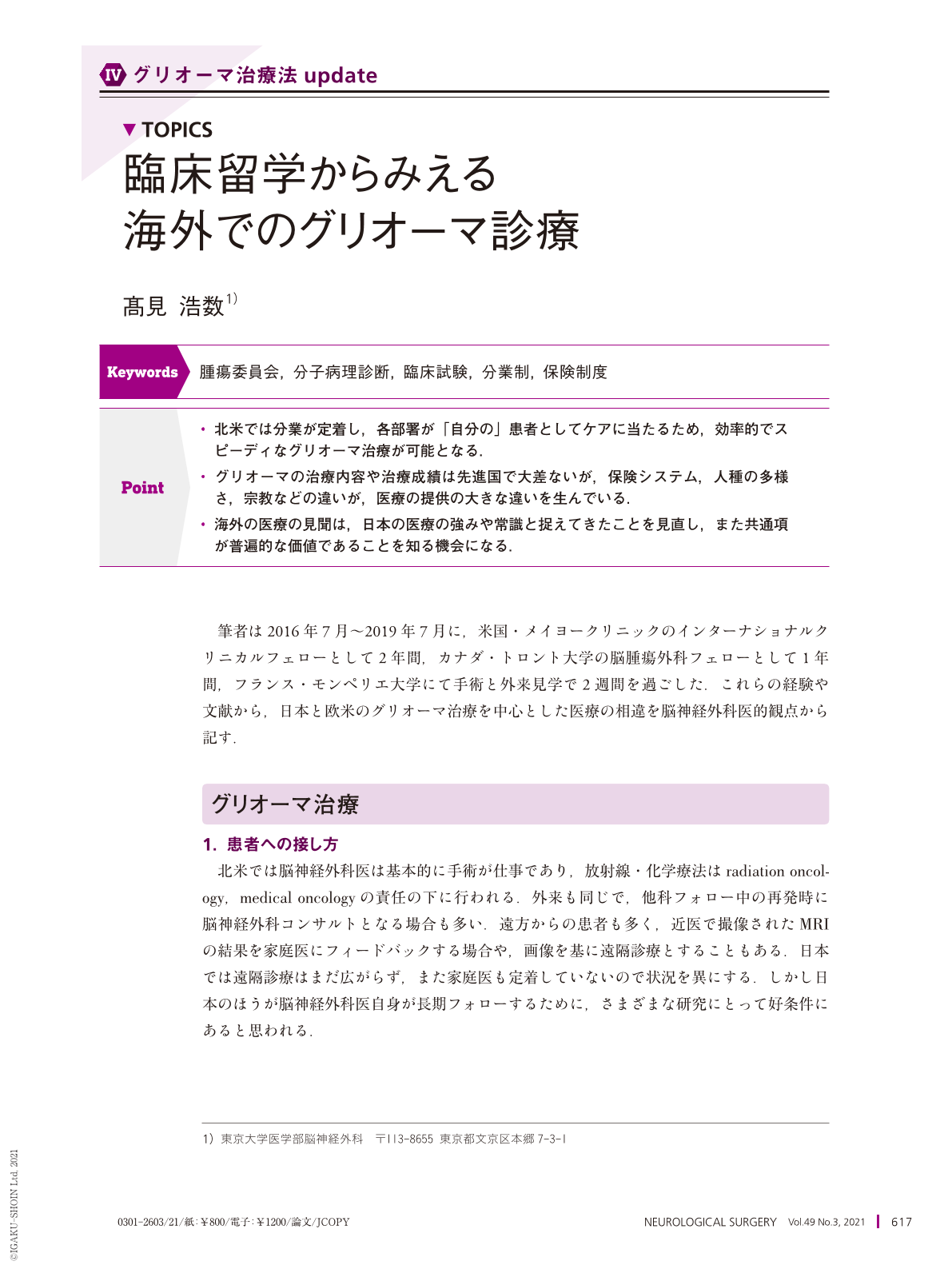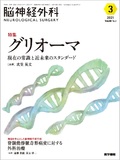Japanese
English
- 有料閲覧
- Abstract 文献概要
- 1ページ目 Look Inside
- 参考文献 Reference
Point
・北米では分業が定着し,各部署が「自分の」患者としてケアに当たるため,効率的でスピーディなグリオーマ治療が可能となる.
・グリオーマの治療内容や治療成績は先進国で大差ないが,保険システム,人種の多様さ,宗教などの違いが,医療の提供の大きな違いを生んでいる.
・海外の医療の見聞は,日本の医療の強みや常識と捉えてきたことを見直し,また共通項が普遍的な価値であることを知る機会になる.
While the medical equipment, treatment strategies, and drugs used for glioma patients are not much different among developed countries, leading to similar treatment outcomes, players involved in the management as well as the medical/social systems and environments differ greatly between Japan and North America. In North America, division of work is established and multiple departments consider patients as their “own,” and are therefore deeply committed to the patients' care which makes the transition of care efficient and smooth for patients. The tumor board was one representative. Neurosurgeons can focus on surgery and clinics, and have dedicated research time allotted for weeks. Due to private insurance in the US, surgery is costly for patients. Religion is part of their life and influences the patients' attitudes toward and ways of thinking about disease, and sometimes unfavorable treatment results. Admittedly, there are advantages and disadvantages in both the Japanese medical environment and those around the world, but it is worthwhile to consider how patients outside of Japan are treated and look back at our practice. It would then widen our perspective and make us recognize that the commonalities are truth.

Copyright © 2021, Igaku-Shoin Ltd. All rights reserved.


